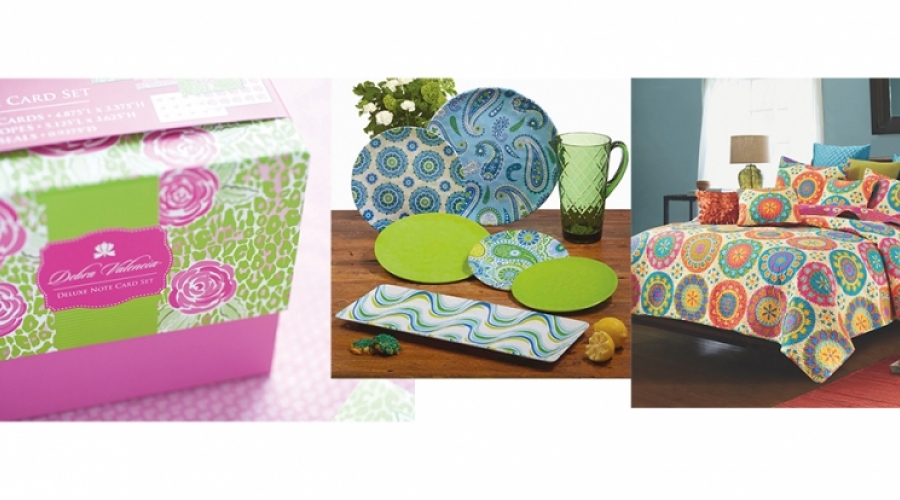
Surface design refers to the prints and patterns—think florals, geometric shapes, animal prints, etc.—that can be found on an array of product designs, everything from wallpaper, stationery, and gift wrapping, to fabric, bedding, and fashion apparel and accessories. For Debra Valencia, segueing from her background in graphic design to surface design was a smart career move that has paid off with hundreds of products now licensed with her designs. We talked to Valencia about her background, and the Surface Design program she was instrumental in creating with fellow Otis College Extension instructor Michael Carroll. (Several Surface Design courses start this week. To view them and to register, click here.)
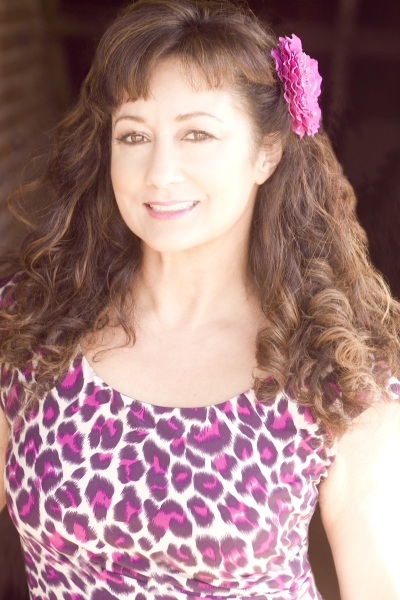 One look at the colorful surface designs by Debra Valencia, and it’s hard to imagine that her instructors at the former Philadelphia College of Art (now the University of the Arts) were influenced by the Basel School of Design and the Bauhaus. “I had a very European-style education as far as design sensibilities, very minimalist and clean, precise and stylized,” she says. But today? “I would say my work is contemporary, highly decorative, very bright and playful.”
One look at the colorful surface designs by Debra Valencia, and it’s hard to imagine that her instructors at the former Philadelphia College of Art (now the University of the Arts) were influenced by the Basel School of Design and the Bauhaus. “I had a very European-style education as far as design sensibilities, very minimalist and clean, precise and stylized,” she says. But today? “I would say my work is contemporary, highly decorative, very bright and playful.”
After graduating with a degree in graphic design, Valencia made a beeline for California and got a job in the office of famed graphic designer Deborah Sussman, whose vibrant work was transformative for the visual identity of the 1984 Los Angeles Olympics, Disney World, and the city of Santa Monica. “She had a sensibility where design was decorative and guided by ethnic influences, pop art, or cultural influences,” Valencia says. “It’s completely the opposite of my education.”
After 12 years with Sussman, Valencia went into publishing and the then-nascent internet design business before starting her own graphic design firm, DeVa Communications, where she worked on graphic design, branding, packaging, and website design for over 100 clients.
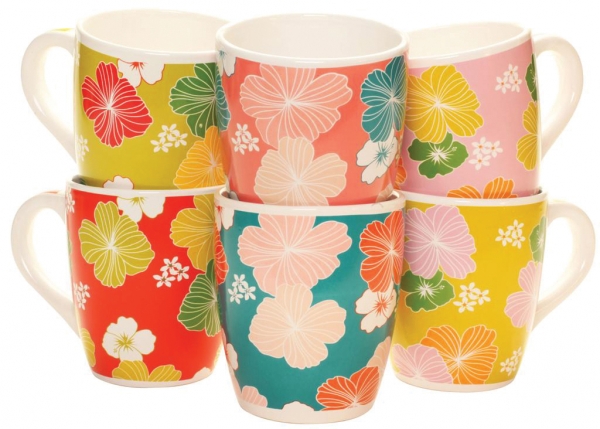 But then the industry started changing, Valencia says. “A lot of things were getting automated—website templates, business card templates—and a lot of print work was going away. So in 2006 I made a conscious decision to start working on a surface design portfolio while I was still running my graphic design firm. And in a worlds-collide-type scenario, I discovered the business model of licensing collections of designs to companies across multiple product categories and getting royalties. By 2007, I landed my first licensing deal and by 2010, I had over 30,” she says. “I was able to basically retire from graphic design and just do surface design. In graphic design, it was advantageous to convey the feeling of an organization behind you. In licensing, it was more desirable to show myself as an individual artist and that it's actually my hands doing all of the artwork, not a team.”
But then the industry started changing, Valencia says. “A lot of things were getting automated—website templates, business card templates—and a lot of print work was going away. So in 2006 I made a conscious decision to start working on a surface design portfolio while I was still running my graphic design firm. And in a worlds-collide-type scenario, I discovered the business model of licensing collections of designs to companies across multiple product categories and getting royalties. By 2007, I landed my first licensing deal and by 2010, I had over 30,” she says. “I was able to basically retire from graphic design and just do surface design. In graphic design, it was advantageous to convey the feeling of an organization behind you. In licensing, it was more desirable to show myself as an individual artist and that it's actually my hands doing all of the artwork, not a team.”
Valencia notes that since graduating art school in the 1980s she has been a part time instructor at Otis College—“Because of my European-style education I got recruited to teach basic design in the Communication Arts department at a very early age”—eventually landing in the Extension program after developing and pitching a business class about licensing artwork for royalties. “Every creative person I knew locally and nationally was asking me for advice on how they can get into licensing,” she says.
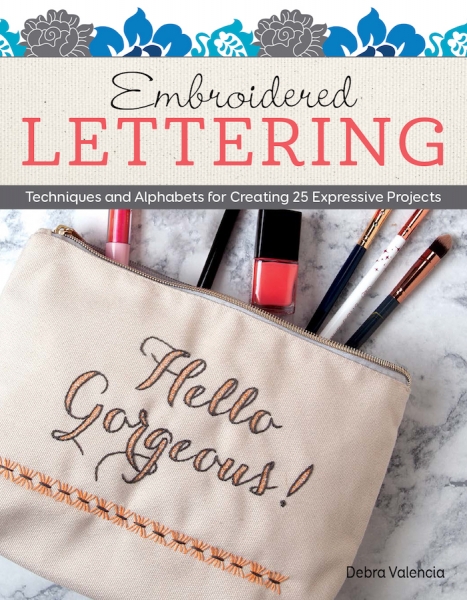 In addition to the Licensing Your Art and Earning Royalties class, Valencia has taught a one-day Embroidery Workshop, and a series of Surface Design courses in collaboration with Michael Carroll (see below). “In Michael’s courses, you’re learning how to do traditional techniques—gouache, watercolor, woodblock, shibori, how to dye paper,” she says. “What I focus on is the actual conceptual side of designing content and collections in themes, because this is what the marketplace is looking for. Combining Michael's classes with my classes, students will have a robust portfolio showing their designs and collections, having involved a personal style and also having tried out a lot of different techniques and honing in on the ones they want to focus on.”
In addition to the Licensing Your Art and Earning Royalties class, Valencia has taught a one-day Embroidery Workshop, and a series of Surface Design courses in collaboration with Michael Carroll (see below). “In Michael’s courses, you’re learning how to do traditional techniques—gouache, watercolor, woodblock, shibori, how to dye paper,” she says. “What I focus on is the actual conceptual side of designing content and collections in themes, because this is what the marketplace is looking for. Combining Michael's classes with my classes, students will have a robust portfolio showing their designs and collections, having involved a personal style and also having tried out a lot of different techniques and honing in on the ones they want to focus on.”
Valencia says that Otis College Extension offers the only Surface Design track for professional development that’s not part of an undergraduate program in Southern California. Competitors, she says, “offer just a single course that doesn’t compare to our nine courses.” In the three years that the Surface Design program has been offered at Extension (it was formerly referred to as Textile/Surface Design), Valencia has seen several former students go on to license their work, get full-time jobs designing at fabric companies, and launch their surface design portfolios at an international level at the Licensing Expo and Surtex.
Such success has led Valencia and Carroll to create a new class they co-teach, Surface Design Production. “We’re teaching the hardcore technical skills and knowledge that students need to actually take the concepts and get them ready for factories in the different product categories,” she says.
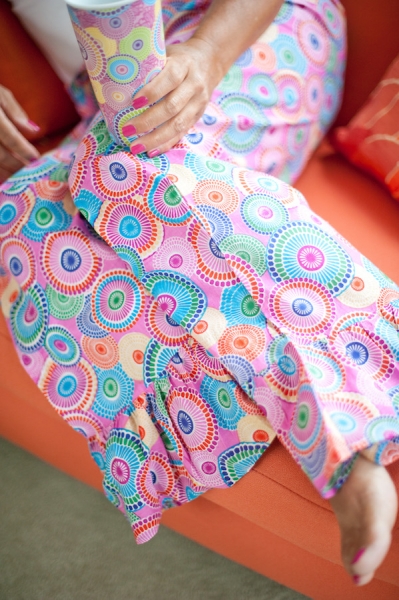 Like Valencia, students can go on to see their work used in a number of ways. Her designs can be found at stores across the globe—on bedding, dinnerware, stationery, school supplies, even eyewear and beauty products. “It’s really exciting because sometimes I’ll go into a store and not even realize my products are there and I’m like, ‘Oh, wow, there’s my greeting card,’” she says. “This is the closest thing I’ve ever done in my career to fine art because I’m actually getting to choose what I want to do, and just put new designs out there, and see who likes them.”
Like Valencia, students can go on to see their work used in a number of ways. Her designs can be found at stores across the globe—on bedding, dinnerware, stationery, school supplies, even eyewear and beauty products. “It’s really exciting because sometimes I’ll go into a store and not even realize my products are there and I’m like, ‘Oh, wow, there’s my greeting card,’” she says. “This is the closest thing I’ve ever done in my career to fine art because I’m actually getting to choose what I want to do, and just put new designs out there, and see who likes them.”
SIDEBAR: Michael Carroll, who teaches the techniques and design foundations of Surface Design, offers his take on this exciting field.
What would you say to someone thinking about the Surface Design Certificate program?
Surface Design is often overlooked, as most consumers focus only on a finished product. There are many stages of development a patterned design idea goes through before it becomes a final product for purchase. The developmental stages are where new talent is needed, always.
How do your Surface Design classes complement Debra Valencia’s?
I focus on techniques that have been practiced in Textile and Surface Design art departments before digital applications. The hand-generated techniques are still needed to create original artwork that is scanned and digitally manipulated to create seamless and continuous patterns, and include hand-painted designs on paper that support and translate a given theme for various market groups. This approach provides the student with a heightened awareness of the design process, as it will involve researching color and design forecasting trends.
What opportunities exist in the field of Surface Design?
Surface Design is big business. Los Angeles is probably the best location to get into this art business, as we are looked upon as trendsetters internationally. Los Angeles serves as a design hub for all consumer market groups, including high- and middle-end apparel, swim/surf, footwear, lingerie, accessories, home furnishings, and many others.
The Surface Design Certificate Program at Otis College Extension is a sequence of courses designed to offer training in the technical and creative skills required to begin a career or enhance skills in the textile/surface design field as a colorist, repeat artist, designer, or stylist. For more information about the program, please click here.


